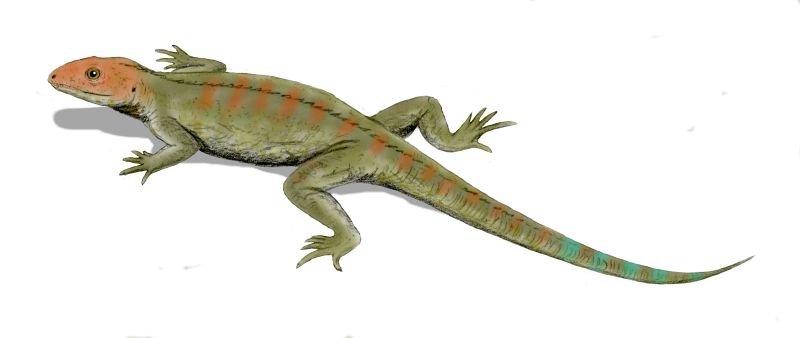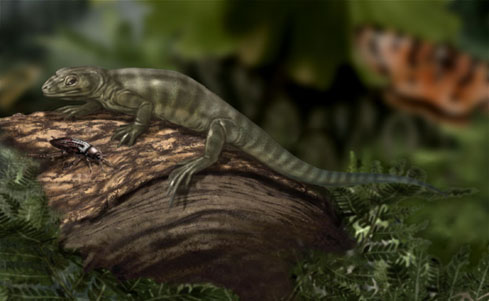[Recent Entries][Archive][Friends][User Info]
| Time | Text |
|---|---|
| 08:04 pm [Link] |
Hylonomus Hylonomus (pronounced /haɪˈlɒnəməs/, hylo- "forest" + nomos "dweller") was a very early reptile. It lived 312 million years ago during the Late Carboniferous period. It is the earliest unquestionable reptile (Westlothiana is older, but may in fact be an amphibian, and Casineria is rather fragmentary). Hylonomus was 20 centimetres (8 in) long (including the tail) and probably would have looked rather similar to modern lizards. It had small sharp teeth and likely ate small invertebrates such as millipedes or early insects. Fossils of Hylonomus have been found in the remains of fossilized club moss stumps in Joggins, Nova Scotia, Canada. It is supposed that, after harsh weather, the club mosses would crash down, with the stumps eventually rotting and hollowing out. Small animals such as Hylonomus, seeking shelter, would enter and become trapped, starving to death. Fossils of the basal pelycosaur Archaeothyris and the basal diapsid Petrolacosaurus are also found in the same region of Nova Scotia, although from a higher stratum, dated approximately 6 million years later. Fossilized footprints found in New Brunswick have been attributed to Hylonomus, at an estimated age of 315 million years. This animal was discovered by John William Dawson in the mid-19th century. The species name comes from Dawson's teacher, the geologist Sir Charles Lyell. While it has traditionally been included in the group Protothyrididae, later studies have shown that it is probably more closely related to diapsids. Гилоном (Hylonomus) Размеры: длина 20 см Место обитания: Новая Шотландия (С. Америка) Период: средний карбон Окаменелые ископаемые остатки гилонома, одного из древнейших известных нам пресмыкающихся, были найдены внутри окаменелых стволов древовидных плаунов. Длинный хвост и тонкие пальцы на лапах придавали гилоному сходство с ящерицей. Маленький череп обладал достаточной прочностью, а челюстные мышцы были сильнее, чем у ранних тероподов (звероящеров). В острозубую пасть гилонома попадали насекомые и многоножки, обитавшие в тропической среде. Гилономы откладывали яйца, имевшие защитную оболочку с анамниотической жидкостью и скорлупу, предохранявшую от высыхания.
Репродукции (1, 2, 3, 4, 5, 6):
|
| Reply: | |







